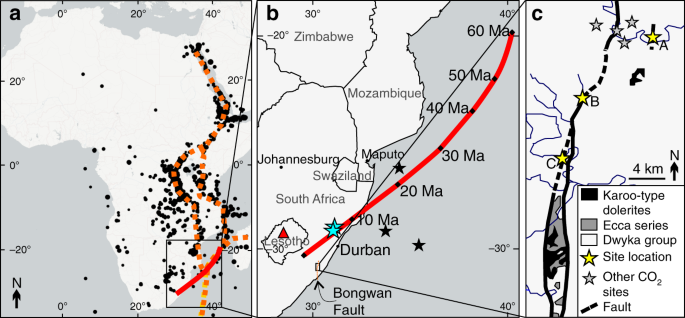 |
| Location of study area and relevant geological features. (Courtesy Authors) |
The discovery of gases released from deep beneath the earth’s crust could help to explain Southern Africa’s unusual landscape, a study suggests.
Scientists have long puzzled over why areas such as South Africa’s Highveld region are so elevated and flat, with unexpectedly hot rocks below the surface.
Hotspots are known to generate volcanic activity in Hawaii, Iceland and Yellowstone National Park.
Geologists have revealed that carbon dioxide-rich gases bubbling up through natural springs in South Africa originate from a column of hot, treacle-like material – called a hotspot – located deep inside the earth.
In South Africa, the hotspot pushes the crust upwards, generating the distinctive landscape, which consists mostly of tablelands more than one kilometre above sea level, the researchers say.
This also explains why rocks beneath the region are hotter than expected – a property that could be harnessed to generate geothermal energy.
Noble gases confirm plume-related mantle degassing beneath Southern Africa, by S. M. V. Gilfillan, D. Györe, S. Flude, G. Johnson, C. E. Bond, N. Hicks, R. Lister, D. G. Jones, Y. Kremer, R. S. Haszeldine & F. M. Stuart.
Nature Communications volume 10, Article number: 5028 (2019)